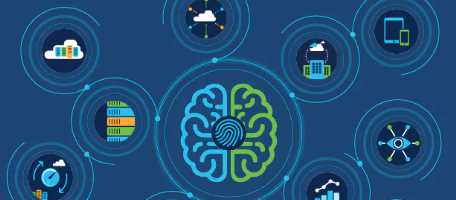The convergence of the Internet of Things (IoT) and Artificial Intelligence (AI) has opened up a world of possibilities, revolutionizing industries and transforming the way we interact with technology. By combining IoT's connectivity and data-gathering capabilities with AI's analytical power, we can achieve enhanced connectivity and automation that propel innovation and drive efficiency. In this blog, we explore the synergy between IoT and AI and how their integration is reshaping our world.
Enhanced Connectivity
IoT enables the seamless connection of devices, sensors, and systems, generating massive amounts of data. AI, particularly machine learning algorithms, can process and analyze this data, extracting valuable insights and patterns. With AI, IoT systems can intelligently interpret and understand the data, leading to smarter decision-making and improved connectivity. AI-powered analytics can identify correlations, detect anomalies, and predict future events, enabling proactive actions and optimizing processes.
Intelligent Automation
Combining IoT and AI enables intelligent automation, where connected devices can autonomously perform tasks and make decisions. AI algorithms can analyze real-time data from IoT devices, learn patterns and behaviors, and make intelligent decisions or trigger automated actions. For example, in smart homes, AI algorithms can learn occupants' preferences and adjust lighting, temperature, and security settings accordingly, creating a personalized and automated living experience.
Predictive Maintenance
IoT devices can collect and transmit real-time data about the performance, usage, and condition of various systems and equipment. By leveraging AI's predictive analytics capabilities, IoT systems can identify potential failures or maintenance needs before they occur. This proactive approach to maintenance, known as predictive maintenance, can significantly reduce downtime, optimize resource allocation, and increase the lifespan of critical assets.
Smart Energy Management
The integration of IoT and AI has revolutionized energy management, enabling efficient utilization and conservation of resources. Smart grids, for example, leverage IoT devices to collect and transmit data on energy consumption and production. AI algorithms analyze this data, predicting demand patterns, optimizing energy distribution, and maximizing renewable energy utilization. This intelligent energy management helps reduce costs, minimize wastage, and promote sustainability.
Intelligent Transportation Systems
IoT and AI are transforming the transportation sector with intelligent transportation systems (ITS). IoT sensors, cameras, and GPS devices gather real-time data on traffic conditions, vehicle movements, and road infrastructure. AI algorithms analyze this data to optimize traffic flow, provide real-time navigation guidance, and improve road safety. Additionally, AI-powered predictive analytics can anticipate congestion, accidents, or other incidents, allowing authorities to take proactive measures.
Personalized User Experiences
The integration of IoT and AI enables highly personalized user experiences across various domains. By collecting and analyzing data from IoT devices, AI algorithms can understand user preferences, habits, and behaviors. This knowledge allows for tailored recommendations, personalized content delivery, and adaptive user interfaces. Whether it's personalized recommendations on streaming platforms or customized shopping experiences, IoT and AI create a more engaging and user-centric environment.
Healthcare Transformation
IoT and AI are revolutionizing healthcare, improving patient outcomes, and transforming the delivery of medical services. Connected medical devices, wearables, and health monitoring systems collect real-time patient data, which AI algorithms analyze to provide accurate diagnoses, personalized treatment plans, and remote patient monitoring. This integration enhances early detection of diseases, enables telemedicine, and improves overall healthcare accessibility and efficiency.
Data Security and Privacy
While the integration of IoT and AI brings immense benefits, it also raises concerns about data security and privacy. The vast amount of data generated by IoT devices needs robust security measures to protect against unauthorized access and breaches. AI-powered security systems can analyze patterns and detect anomalies in real-time, enhancing the ability to identify and mitigate potential security risks. Furthermore, privacy frameworks and regulations should be implemented to ensure the ethical and responsible use of IoT and AI technologies.
Conclusion
The integration of IoT and AI has the potential to transform industries and improve our daily lives. By harnessing the power of connectivity, data analytics, and automation, IoT and AI create intelligent and efficient systems. From enhanced connectivity and automation to predictive maintenance and personalized experiences, the collaboration between IoT and AI opens up a world of possibilities, shaping a more connected, intelligent, and automated future.




Leave Comment